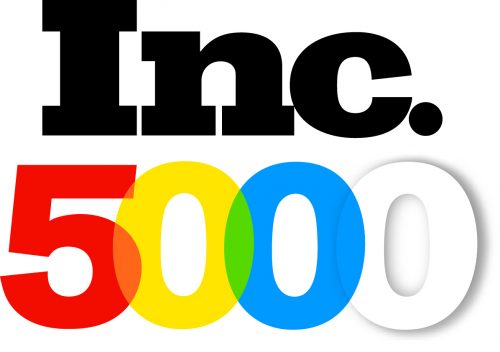In the 2019-20 academic year, an estimated 3.9 million students graduated from college in the United States.
Are you preparing to begin your own collegiate this fall?
If so, the costs can seem overwhelming. In-state public colleges cost an average of $10,116 per year to attend, while private institutions cost around $36,801 per year.
Regardless of your financial standing, that’s far from pocket change. Thankfully, there are resources, including loans, that can make college more affordable.
Are you considering applying for a student loan to help you pay for your tuition and other expenses? If so, read on. Today, we’re sharing a few tips to get you started!
Different Types of Student Loans to Know
When you borrow money to help pay for college, you’ll have two main types of loans to choose from. These include:
- Federal student loans
- Private student loans
Within each category, there are a few sub-types. There’s no right or wrong choice, but it helps to know the details. Let’s take a look at each option in greater detail.
Types of Federal Student Loans
If you apply for a federal student loan, you’ll go through the U.S. Department of Education (DOE). The DOE’s lending options all fall under the William D. Ford Federal Direct Loan (Direct Loan) Program.
There are four kinds of direct loans to choose from, including:
- Direct Subsidized Loans
- Direct Unsubsidized Loans
- Direct PLUS Loans
- Direct Consolidation Loans
Direct Subsidized Loans
You can apply for a Direct Subsidized Loan if you demonstrate financial need to help cover the costs of higher education. Your eligibility is directly tied to your ability to pay for the costs of college or career school.
Direct Unsubsidized Loans
Direct Unsubsidized Loans are not tied to financial need, nor are they credit-based. Undergraduate, graduate and professional students can all apply.
Your school will decide how much you can borrow, based on the cost of attendance and the sum of any other financial aid you receive.
Direct PLUS Loans
Direct PLUS Loans are unsubsidized, credit-based loans designed for parents and graduate/professional students. If you had an adverse credit history, you’ll need to meet additional requirements to qualify.
Direct Consolidation Loans
It can be hard to organize all of your federal student loans. Direct Consolidation Loans allow you to consolidate them all into one loan, managed by a single loan servicer.
Types of Private Student Loans
In addition to federal student loans, private options are also available. Before going this route, make sure you’ve exhausted all resources for scholarships, grants, and federal loans. Those will usually have better interest rates, repayment options, and terms.
Private student loans are issued by a bank or another financial institution. Let’s take a look at the two main types.
Private Student Loans
As a student, you’ll take out a private student loan by yourself. Your parent or another creditworthy individual will often cosign the loan for you.
Parent Loans
If your parents plan to help you pay for college, there are also private parent loans available. Your parent or another creditworthy individual will take out this loan on your behalf.
Applying For a Student Loan: Step by Step
You’ve decided to apply for a student loan to help you pay for college. Here are the steps to follow, based on the loan type you select.
Applying for a Federal Student Loan
Before you apply for a federal student loan, it helps to know your borrowing limits. The DOE sets these limits. They are:
- Undergrads: Direct Subsidized/Direct Unsubsidized Loans: $5,500 to $12,500 per year depending on your school year and dependency status
- Graduate or professional students: Direct Unsubsidized Loans: Up to $20,500 each year, with Direct PLUS Loans covering the remainder
- Parents of a dependent undergraduate student: Direct PLUS Loans to cover the remainder of college costs not covered by other financial aid
The first step when applying for a federal student loan is to complete the Free Application for Federal Student Aid (FAFSA), available here. You’ll complete a new FAFSA every year that you need financial aid for college.
Your college or career school will receive and review your FAFSA application. Then, they’ll send you a financial aid offer, which may include federal student loans.
The letter will include instructions on how to accept all or a portion of the loans you qualified for. In most cases, there are pre-requisite steps required before you can receive your funds. These include:
- Completing an online entrance counseling course to help you understand your loan obligations
- Signing a Master Promissory Note to agree with the loan’s terms
Applying for a Private Student Loan
You’ll apply for a private student loan through your bank or financial institution. That means you’ll go straight to the lender to complete your application.
To do so, follow these steps:
- Visit the lender’s website
- Review the loan terms (e.g. interest rate, repayment options, benefits)
- Complete the online application, selecting the repayment option and interest rate type you prefer
To boost your creditworthiness and improve your chances of being approved, you can add a cosigner to your loan application.
When you submit your information, the lender will check your credit, along with your cosigner’s. Once they review all of your data, they’ll send you a decision via their preferred communication method.
Repaying Your Student Loans
You don’t have to begin paying back your federal student loans until after you graduate from college, or if you drop your enrollment below half-time. Most options also include flexible repayment plans that allow you to postpone your payments if you’re struggling financially.
This is one benefit that federal student loans have over private options. With a private student loan, you’ll often be able to choose between in-school and deferred repayment options. However, these repayment plans are often less flexible than those offered by the DOE.
Debt Resolution You Can Trust
Applying for a student loan can be a great way to get your academic journey off the ground. Earning a college or career school diploma is one of the smartest and most beneficial investments you can make for your future.
Yet, it’s important to understand your obligations as a borrower.
The amount you borrow today will affect your financial future, and your student loan payments should only comprise a small fraction of your future salary. Borrowing more than you afford to repay can leave you drowning in debt after graduation.
If you’re over your head in student loan payments, we can help. A debt consolidation company can help you find new ways to combine your payments, lower your interest rates, and more.
We’ll help you find the right option for your needs, starting with one click. Contact us today to learn more about how our services work!




